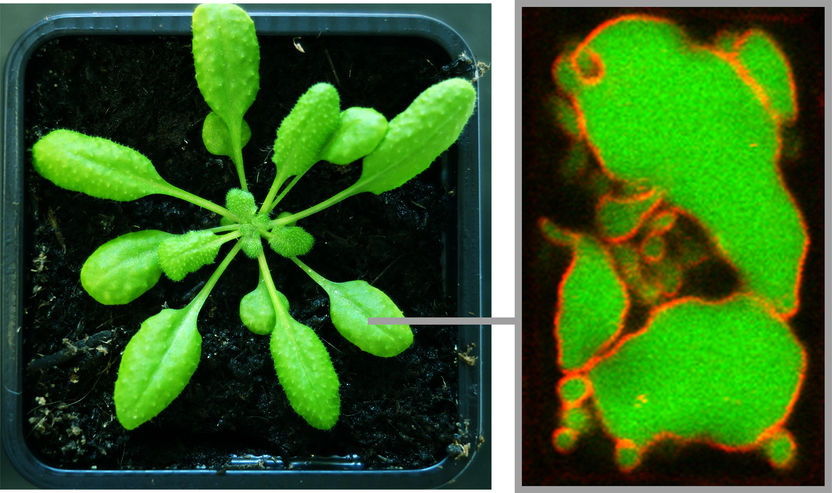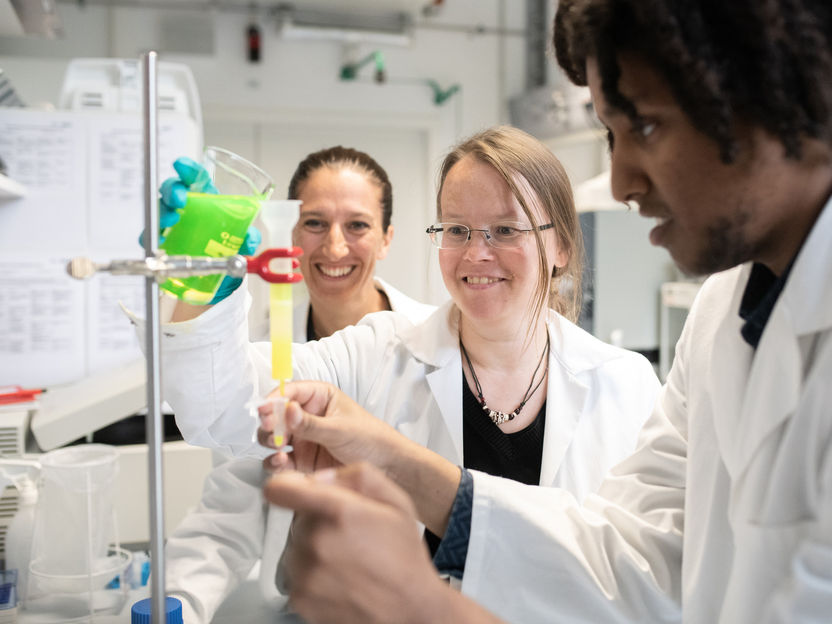Increased levels of carbon dioxide could threaten zinc and iron levels in plants
Study by BGU researcher and colleagues on most significant health threat from climate change featured in Nature
Crops that provide a large share of the global population with most of their dietary zinc and iron will have significantly reduced concentrations of those nutrients at the elevated levels of atmospheric CO2 anticipated by around 2050, according to research published in Nature. Given that an estimated two billion people suffer from zinc and iron deficiencies, resulting in a loss of 63 million life years annually from malnutrition, the reduction in these nutrients represents the most significant health threat ever shown to be associated with climate change.
Humanity is conducting a global experiment by rapidly altering the environmental conditions on the only habitable planet we know. As this experiment unfolds, there will undoubtedly be many surprises. Finding out that rising CO2 threatens human nutrition is one such surprise.
Some previous studies of crops grown in greenhouses and chambers at elevated CO2 had found nutrient reductions, but those studies were criticized for using artificial growing conditions. Experiments using free air carbon dioxide enrichment (FACE) technology have subsequently become the gold standard as FACE allows plants to be grown in open fields at elevated levels of CO2. However, even prior studies using FACE had small sample sizes and have been inconclusive.
Dr. Itai Kloog of the Department of Geography and Environmental Development and colleagues analyzed data involving 41 cultivars (genotypes) of grains and legumes from the C3 and C4 functional groups (plants that use C3 and C4 carbon fixation) from seven different FACE locations in Japan, Australia, and the United States. The level of CO2 across all seven sites was in the range of 546-586 parts per million (ppm). They tested the nutrient concentrations of the edible portions of wheat and rice (C3 grains), maize and sorghum (C4 grains) and soybeans and field peas (C3 legumes).
The results showed a significant decrease in the concentrations of zinc, iron, and protein in C3 grains. For example, zinc, iron, and protein concentrations in wheat grains grown at the FACE sites were reduced by 9.3%, 5.1%, and 6.3% respectively, compared with wheat grown at ambient CO2. Zinc and iron were also significantly reduced in legumes; protein was not.
The finding that C3 grains and legumes lost iron and zinc at elevated CO2 is significant. It is estimated that 2-3 billion people around the world receive 70% or more of their dietary zinc and/or iron from C3 crops, particularly in the developing world, where zinc and iron deficiency is already a major health concern.
Another interesting finding was that zinc and iron varied substantially across cultivars of rice. That finding suggests that there could be an opportunity to breed reduced sensitivity to the effect of elevated CO2 into crop cultivars in the future.
Original publication
Most read news
Original publication
Samuel S. Myers, Antonella Zanobetti, Itai Kloog, Peter Huybers, Andrew D. B. Leakey, Arnold Bloom, Eli Carlisle, Lee H. Dietterich, Glenn Fitzgerald, Toshihiro Hasegawa, N. Michele Holbrook, Randall L. Nelson, Michael J. Ottman, et al.; “Increasing CO2 threatens human nutrition.”; Nature, 2014.
Organizations
Other news from the department science

Get the life science industry in your inbox
By submitting this form you agree that LUMITOS AG will send you the newsletter(s) selected above by email. Your data will not be passed on to third parties. Your data will be stored and processed in accordance with our data protection regulations. LUMITOS may contact you by email for the purpose of advertising or market and opinion surveys. You can revoke your consent at any time without giving reasons to LUMITOS AG, Ernst-Augustin-Str. 2, 12489 Berlin, Germany or by e-mail at revoke@lumitos.com with effect for the future. In addition, each email contains a link to unsubscribe from the corresponding newsletter.
Most read news
More news from our other portals
Last viewed contents
Genetic Technologies grants third license to Monsanto
Evolva receives clearance to move EV-077 into Phase IIa

InvIOs raises €8.2 million in a Series A to finance pipeline progress in immuno-oncology

Cellular transport routes - Biologists discover new mechanisms of protein transport in plant cells



















































